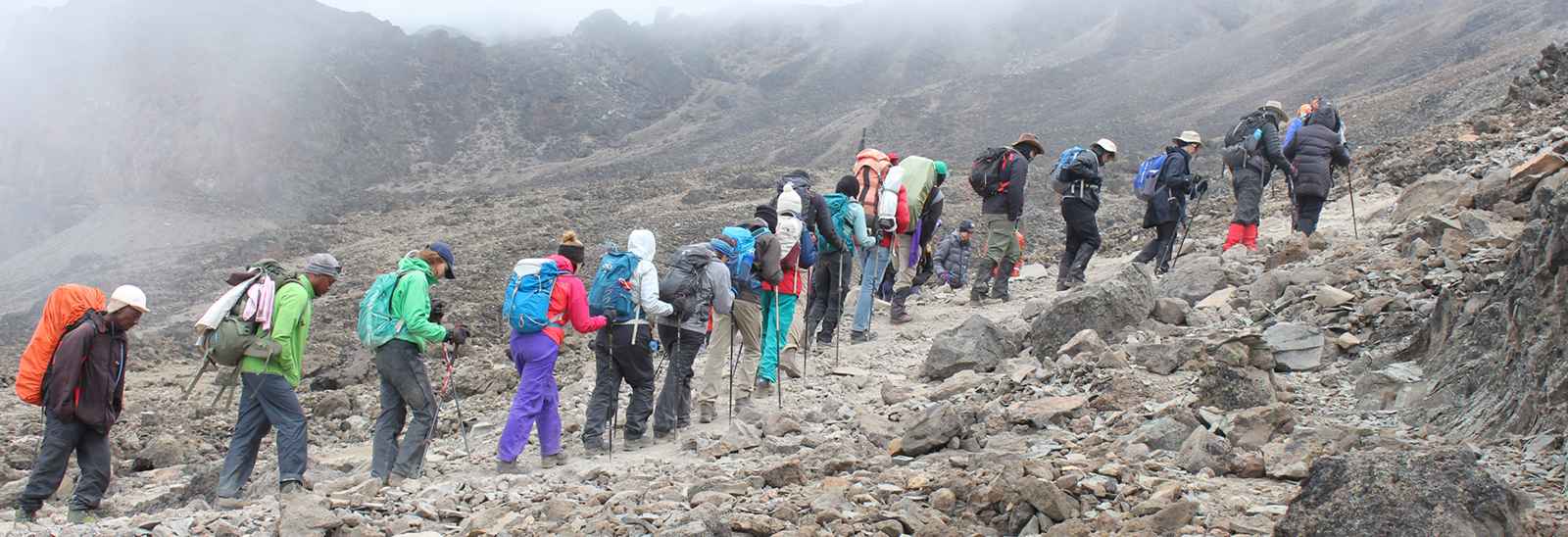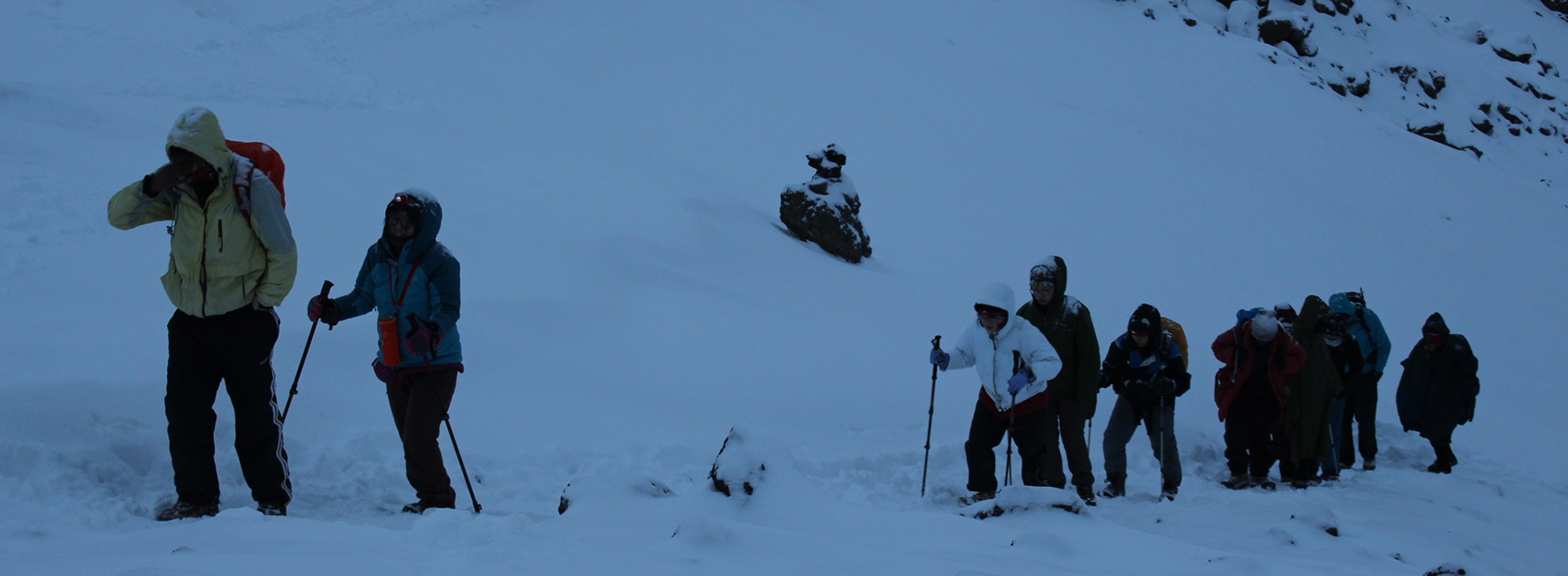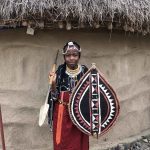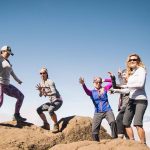Can I Climb Kilimanjaro Without a Guide
Can I Climb Kilimanjaro Without a Guide?
First things first, unfortunately it is not possible to climb Kilimanjaro without a guide.
In 1991 the Tanzanian government and Kilimanjaro National Park Authority changed its policy towards unsupported treks on Mount Kilimanjaro. In short, the regulations require that all trekkers are accompanied by a registered and licensed guide.
This may come as bad news if you were hoping to climb Kilimanjaro without a guide and porters. The good news is that there are plenty of reasons why climbing Kilimanjaro with a professional team is better for your safety and chances of summit success.
Safety
The main reason you need a guide and support crew on Kilimanjaro is for your own safety.
A registered operator will carry all the necessary gear to keep you warm, well fed and hydrated on the mountain. Guides are trained in first aid as well as monitoring altitude sickness symptoms.
With years of experience, your guide will be quick to pick up the difference between ‘normal’ reactions to the change in altitude and changes that could be more serious. They can also advise on how best to manage these symptoms. Teams carry an oxygen bottle for use in serious situations.
Guides also ensure trekkers maintain a slow pace; this is important for acclimatization. Rushing up can have disastrous effects, regardless of how fit you are.
Comfort
A large reason why the Kilimanjaro trekking industry has developed the way it has is because of competition between companies. Local operators strive to provide the best experience and highest chance of summit success all while maintaining the lowest possible price.
This has resulted in Kilimanjaro camps becoming increasingly well organized. In the past, hikers trekked up carrying their own supplies and often slept in caves. These days, porters carry most of the load and guests arrive in an already pitched tent, hot meals and even a private bathroom!
Although this can seem overboard (especially to those who are used to roughing it on their own), it does have its purpose. A more comfortable camp and lighter backpack mean that you can save your energy for when you need it most, summit night!
Local Income
A big reason for the decision to restrict activity on Kilimanjaro is of course financially motivated.
Thousands of Tanzanians living in the Moshi and Arusha area rely on the mountain to support their family. For every porter, cook and guide on your team, there are multiple family members benefiting from your trek.
Stricter regulation of hikers on the mountain has also enabled the authorities to better regulate the local operators. This includes the treatment and payment of porters, which has been shocking in the past.
Without tourists on the mountain, the local economy comes to a standstill. This was painfully highlighted during the COVID pandemic when thousands of people were left unemployed until travel re-opened.
Cost Implications of Guided Hiking on Mt. Kilimanjaro
The average ratio of trekkers to support crew are: 1:4, 2:8, 3:12, 4:16.
Some tour operators offer lite versions where support crews are smaller, and trekkers are required to carry more of their own gear (up to 12kg).
Trekkers also need to pay hefty park entrance fees to climb Kilimanjaro. Depending on which route you choose and the number of days on the mountain, the fees range from $800-$1200 (including 18% VAT tax).
The combination of having to take a guide with a full support crew (incl. a cook), along with having to pay a park entrance fee means that the average 7-day Kilimanjaro trek costs between US$2,000-US$3,000 (incl. transfers). Tour operators who offer treks under US$1,500 are most likely cutting corners and not paying their staff a fair wage (see our guide on how much it costs to climb Kilimanjaro).
On Kilimanjaro Lifetime Adventures, occasionally we receive inquiries about whether it would be possible for visitors to climb Kilimanjaro on their own.
Why Do People Want to Climb Kilimanjaro Independently?
Having a full staff to lead the climb, carry the supplies, and do camp chores leaves some feeling like they are “glamping” and being overly pampered. They want to endure all the hardships that come with climbing a seventh summit peak. They want to feel like they completely earned the summit. And they are somewhat embarrassed by the four-star treatment they get from a large team of porters, cooks, and guides.
Secondly, some people want to climb without staff to save money. Kilimanjaro climbing prices are not cheap. Though National Park fees account for the largest portion of operating expenses, the wages of the staff make up the second highest portion. Eliminating the mountain crew entirely would be a reasonable way to reduce the cost.
Climbing Kilimanjaro Without Porters
So, what about hiring just a guide on my hike to Kilimanjaro?
Legally, this is possible. Regulations only speak to being accompanied by a licensed guide. It does not mention porters or other support staff. However, there are some huge challenges that make this endeavor unrealistic for almost anyone.
First, the guide himself will want to have a porter or two to carry his belongings at a minimum. He does not want to carry tents, gear, gas, and food for many days up the mountain if he doesn’t have to. Though it might be your dream to climb unassisted, he does not share those views.
It would be like someone insisting that you make your job exponentially harder on purpose, and you complying. So, expect that your guide will require you to pay the wages for him and at least another one or two porters, for his own well-being.
Secondly, there is a big issue with access to water. On our supported treks, a team of porters leave from camp to fetch water in five-gallon buckets and bring them back to camp, over and over, so that our clients have an adequate water supply for drinking, cooking, washing, and for the portable toilets.
Fetching water in this way is manageable at the lower elevations when the water source is close. However, at higher elevations, it’s a huge challenge. There is no reliable source of water above 13,000 feet. High camps Barafu, School Hut and Kibo Hut are located at around 15,400 feet.
So, to climb unsupported, you would need to carry enough water to last you until you return to 13,000 feet, in addition to all your other gear. In other words, you could have a pack weight more than 70 lbs. for the most difficult parts of the climb. So, while in theory it may still be possible to climb Kilimanjaro without porters, in reality it’s impractical.
Conclusion
If after reading this, you still want to climb this way, our advice is to consider letting that idea go. You don’t have to be hardcore 100% of the time. Come to Tanzania and allow our Tanzania local guides and porters to show you warm hospitality on the mountain (consensus is that they’re amazing) while you focus on your journey. It is much safer this way and will be much more enjoyable. And in doing so you are supporting the local economy and local staff who depend very much on tourism for their livelihoods.







